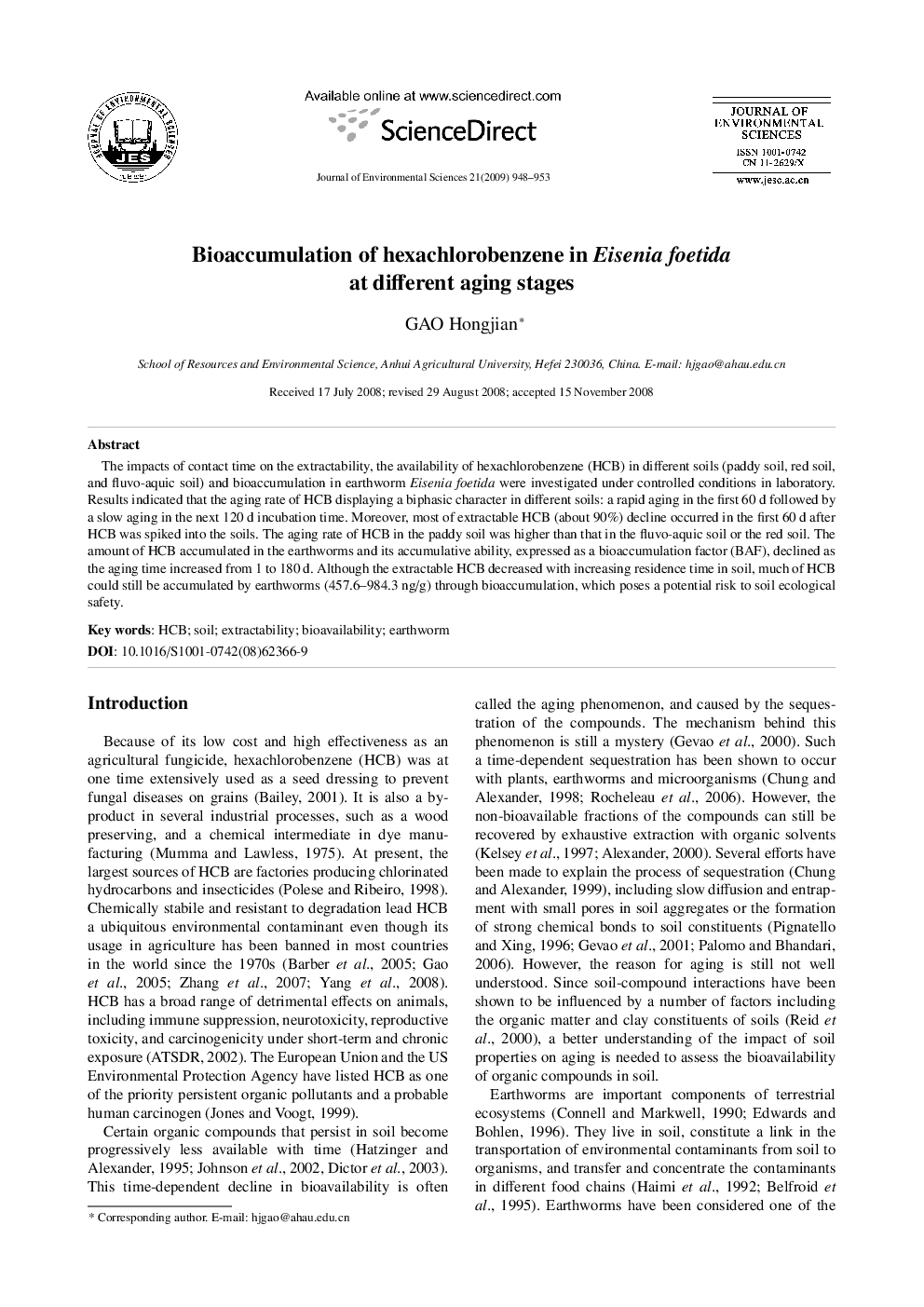| کد مقاله | کد نشریه | سال انتشار | مقاله انگلیسی | نسخه تمام متن |
|---|---|---|---|---|
| 4456254 | 1312549 | 2009 | 6 صفحه PDF | دانلود رایگان |

The impacts of contact time on the extractability, the availability of hexachlorobenzene (HCB) in different soils (paddy soil, red soil, and fluvo-aquic soil) and bioaccumulation in earthworm Eisenia foetida were investigated under controlled conditions in laboratory. Results indicated that the aging rate of HCB displaying a biphasic character in different soils: a rapid aging in the first 60 d followed by a slow aging in the next 120 d incubation time. Moreover, most of extractable HCB (about 90%) decline occurred in the first 60 d after HCB was spiked into the soils. The aging rate of HCB in the paddy soil was higher than that in the fluvo-aquic soil or the red soil. The amount of HCB accumulated in the earthworms and its accumulative ability, expressed as a bioaccumulation factor (BAF), declined as the aging time increased from 1 to 180 d. Although the extractable HCB decreased with increasing residence time in soil, much of HCB could still be accumulated by earthworms (457.6–984.3 ng/g) through bioaccumulation, which poses a potential risk to soil ecological safety.
Journal: Journal of Environmental Sciences - Volume 21, Issue 7, 2009, Pages 948-953